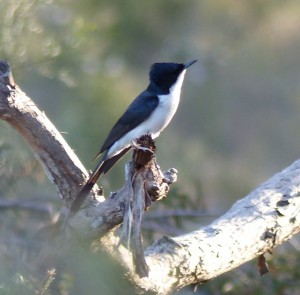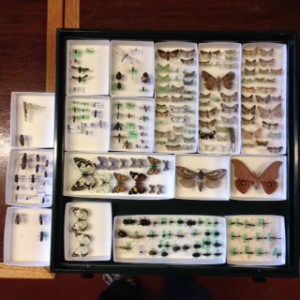Eaglehawk Waterhole update – Part 2: Weed control and insect collecting
As mentioned last week in the first of this series of Eaglehawk updates, there has been a lot of action on and around the property in recent months.
One important, and ongoing, task at Eaglehawk is weed control, and from September to November new casual NGT team member Sam Rothe has been spending time targeting Skeleton Weed and Phalaris on the property. Skeleton Weed treatment has taken place over an area of about 20 hectares in sandy Stringybark habitat in the south-west corner of the reserve by Greening Australia Victoria. Additional smaller pockets of Skeleton Weed have been tackled by Sam recently, who has also conducted targeted spraying of Phalaris taking place in Grassy Woodland areas in the northern part of the property.
October was a busy month at Eaglehawk, with a birding camp-out taking place over the long weekend; read more here. Although NGT has now owned the property for nearly two years, the flora list continues to grow every time we visit! During this particular weekend, some dedicated time was spent on flora rambles, and specifically orchid hunting as spring is a key time to see and identify these rare beauties. An incredible nine orchid species were added to the property species list, bringing the total number of species found on the property so far to over 160.
A lot of work in recent months has been going into increasing our knowledge of the insect life of Eaglehawk and the surrounding area. Friend of NGT and Butterfly Conservation Society member, Andy, has been spending some time at the property catching and identifying butterflies, moths, beetles, wasps, and other insects, using a range of capture techniques including light trapping, netting, and pitfall traps. The technique used depends of course on the target, with light trapping most useful for collecting moths for example.
The insects are preserved and placed in another growing collection stored at NGT’s office in Mount Gambier. Andy’s work has identified an incredible 60 moth species, some which neither he nor Bryan have seen before in all their extensive experience – these may even be new species for the state, although this has not yet been determined. A further 13 butterfly species have been found, excitingly including two mistletoe feeding species the Spotted Jezebel and the Broad-margined Azure. Twenty-eight types of beetles have been found; 22 species of ants, wasps, and bees; five species of flies, and two cockroaches!
The third round of ant surveys at Eaglehawk took place in November. Six lines of pitfall traps are set in multiple sites and results from previous years indicate much higher ant diversity at Eaglehawk compared to the two nearby conservation parks Bangham and Geegeela. It is too early to draw any conclusions from this information, but just goes to show how fascinating tiny creatures can be and perhaps how influential they might be in the restoration process.
We’d like to acknowledge and thank all those who have been involved in work at Eaglehawk over the recent months, with a special mentions and thank yous going out to John Samuel-White for his help setting the pitfall traps, and to Archie and Exxo from the South Australian Museum for their assistance in identifying insect specimens.
Next week we’ll update you on fence removal, and important action in the property’s management plan, and let you know what else we’ll be up to in the coming months.



